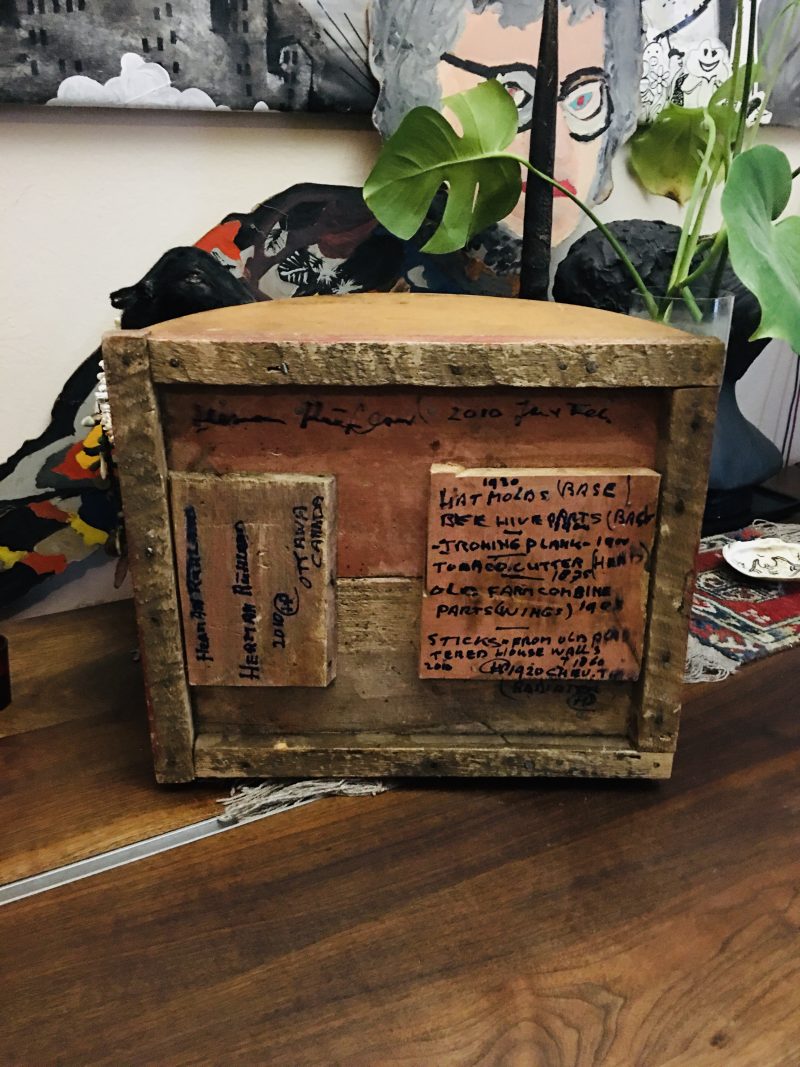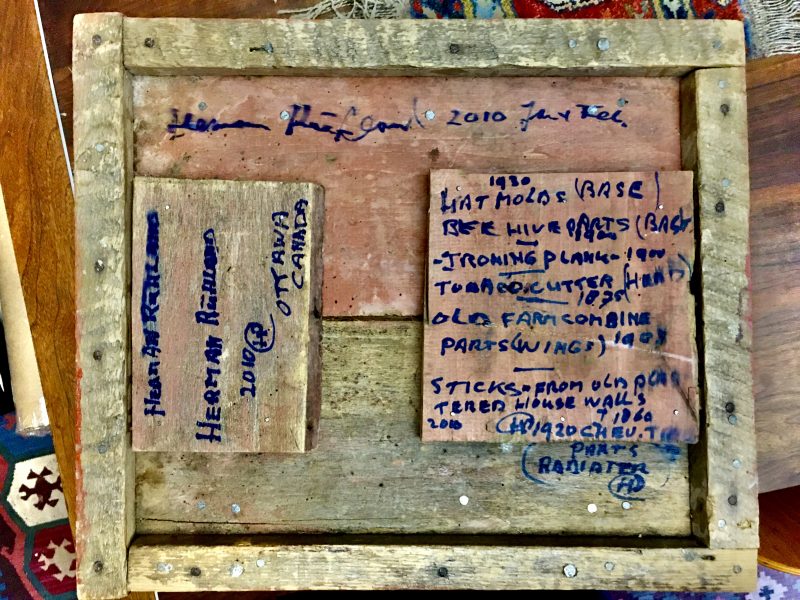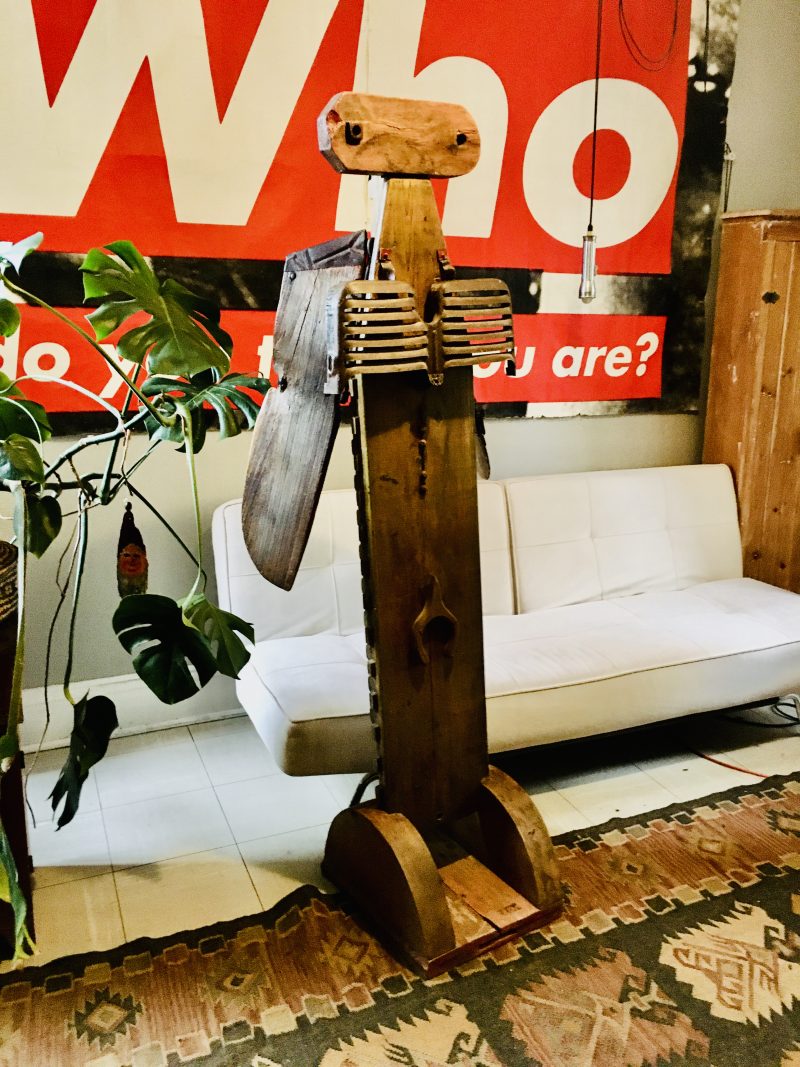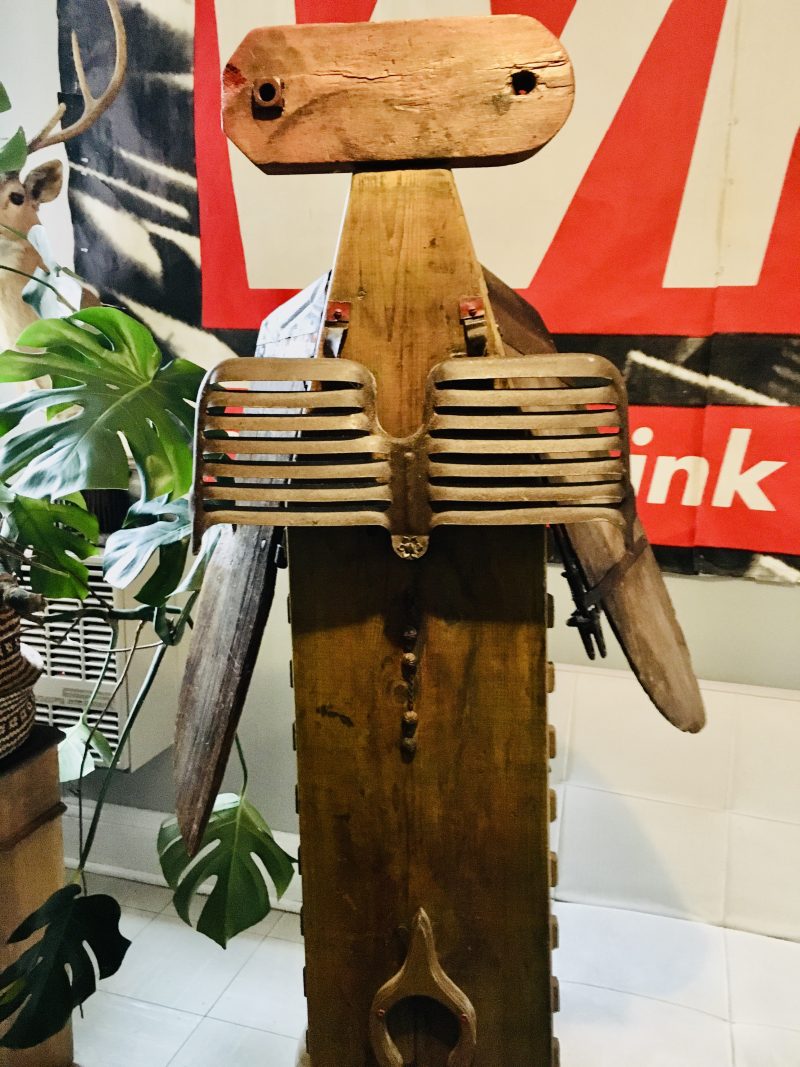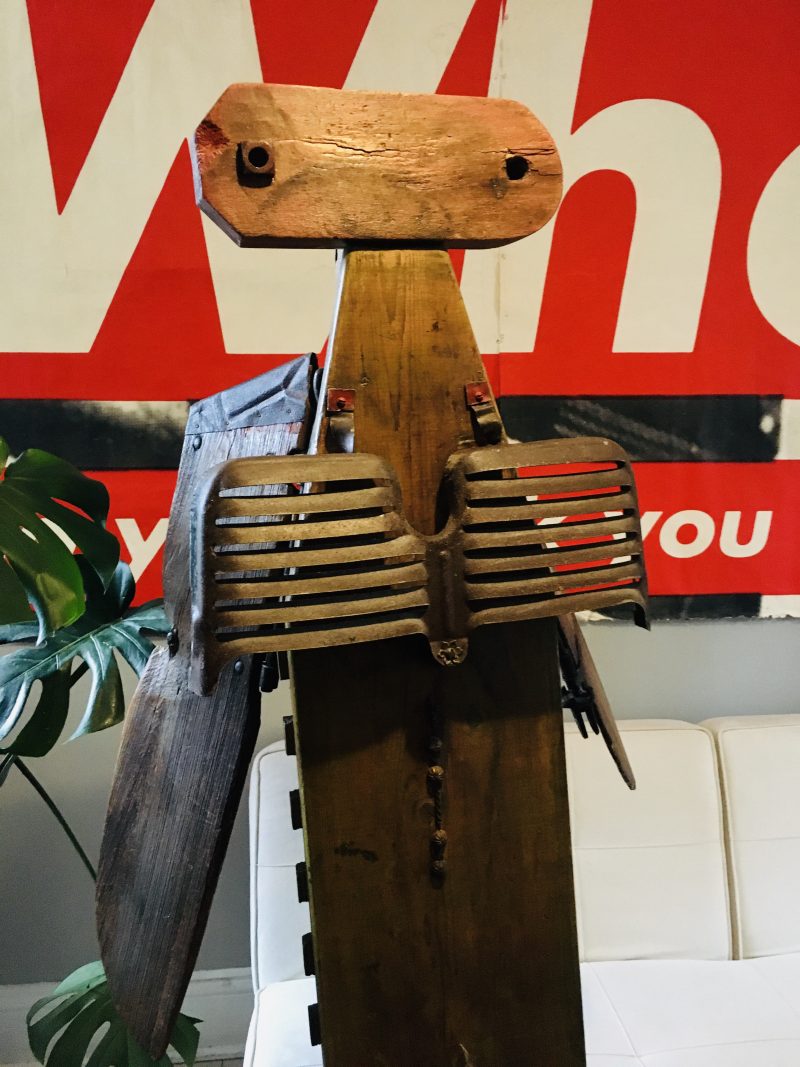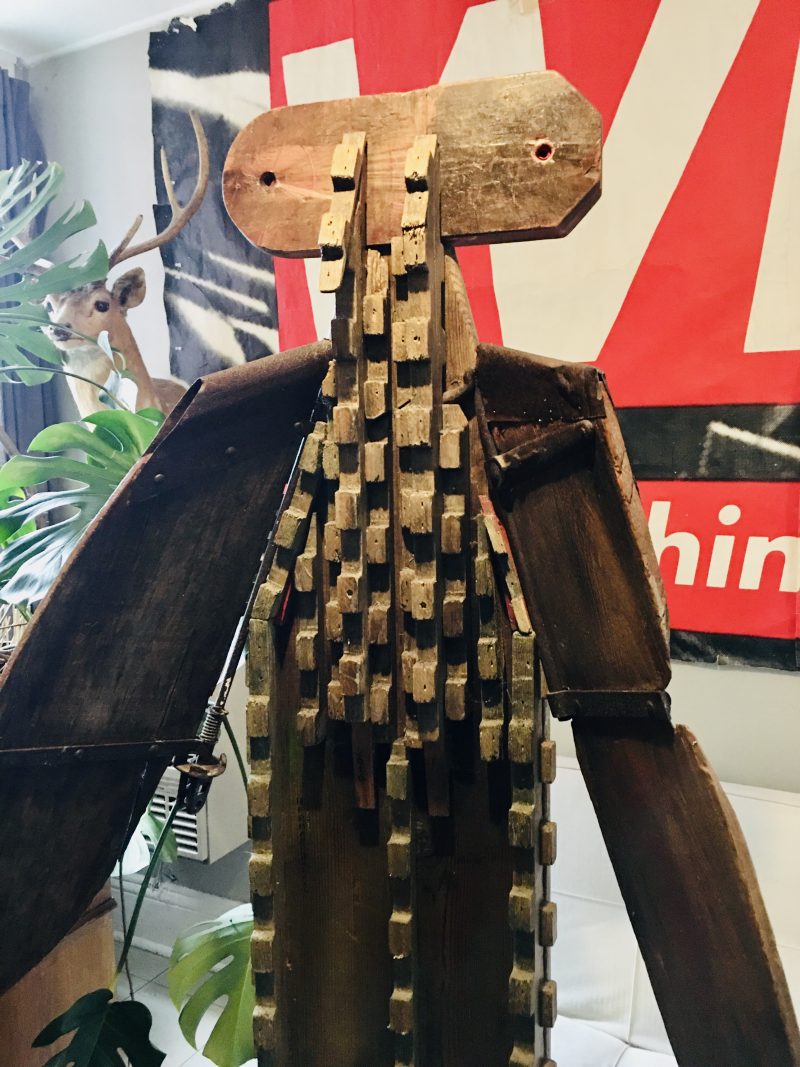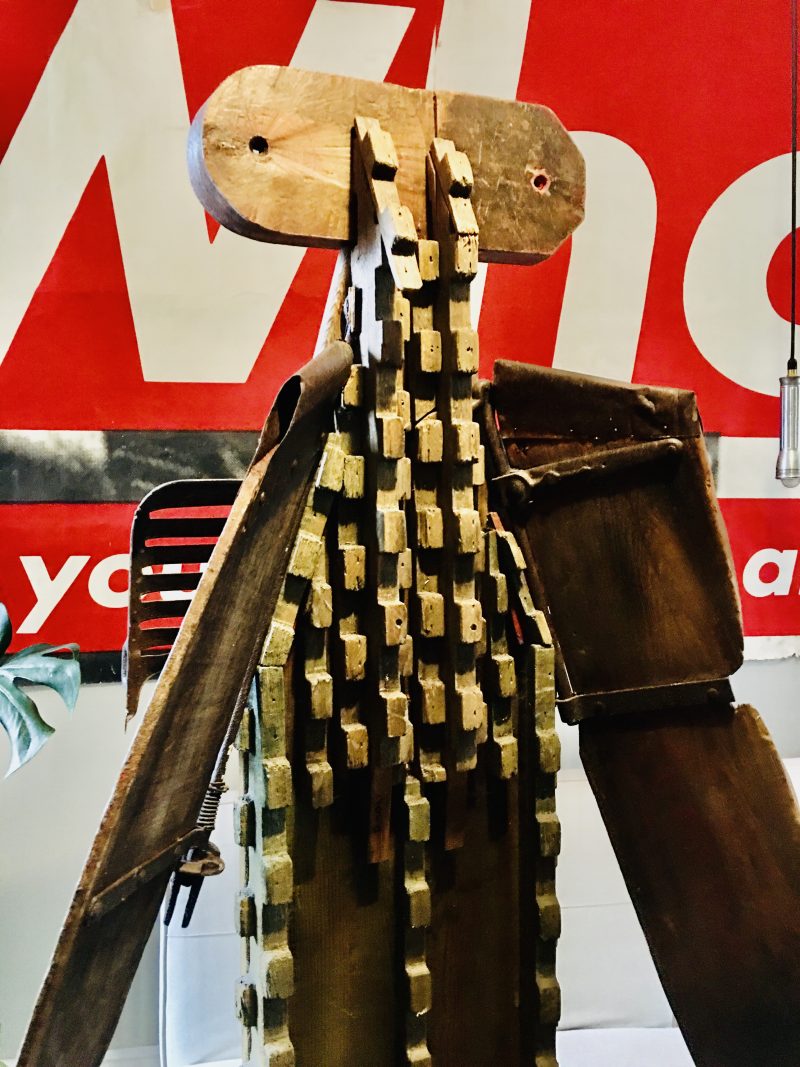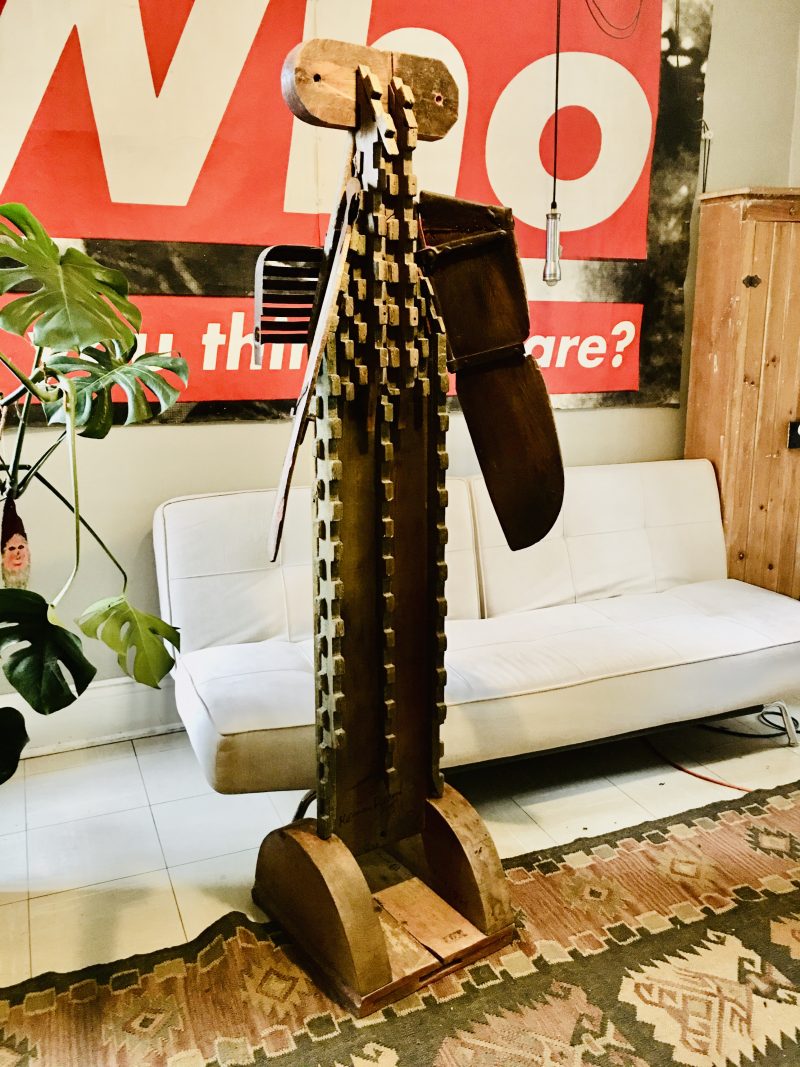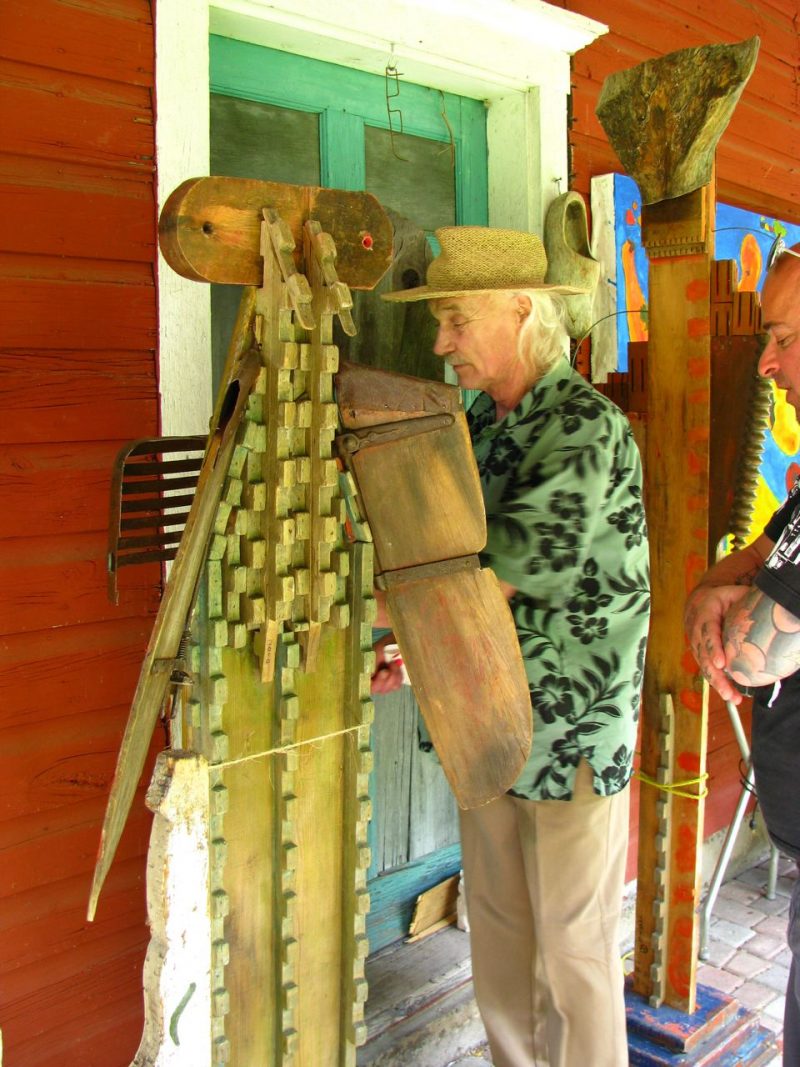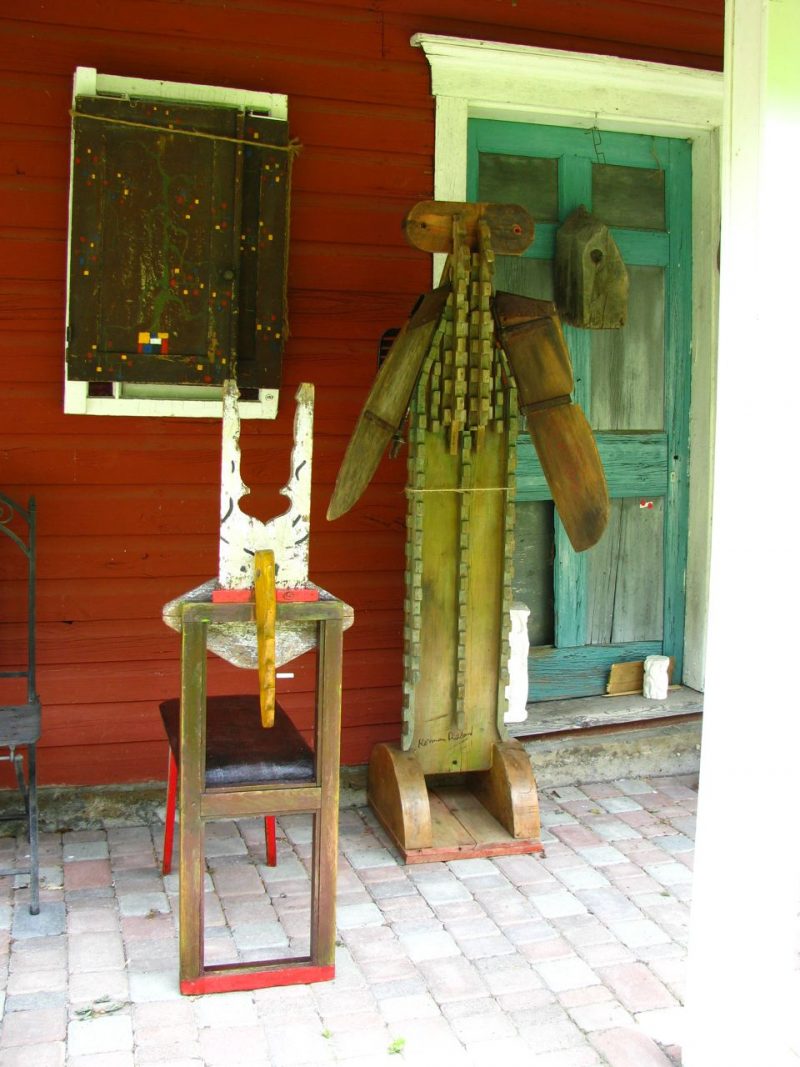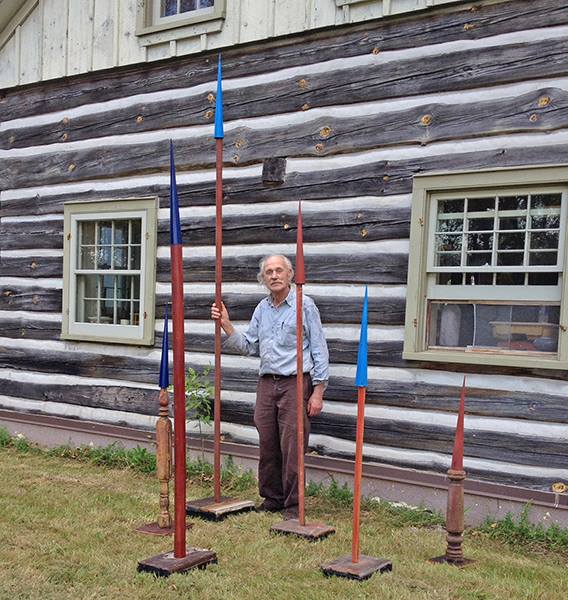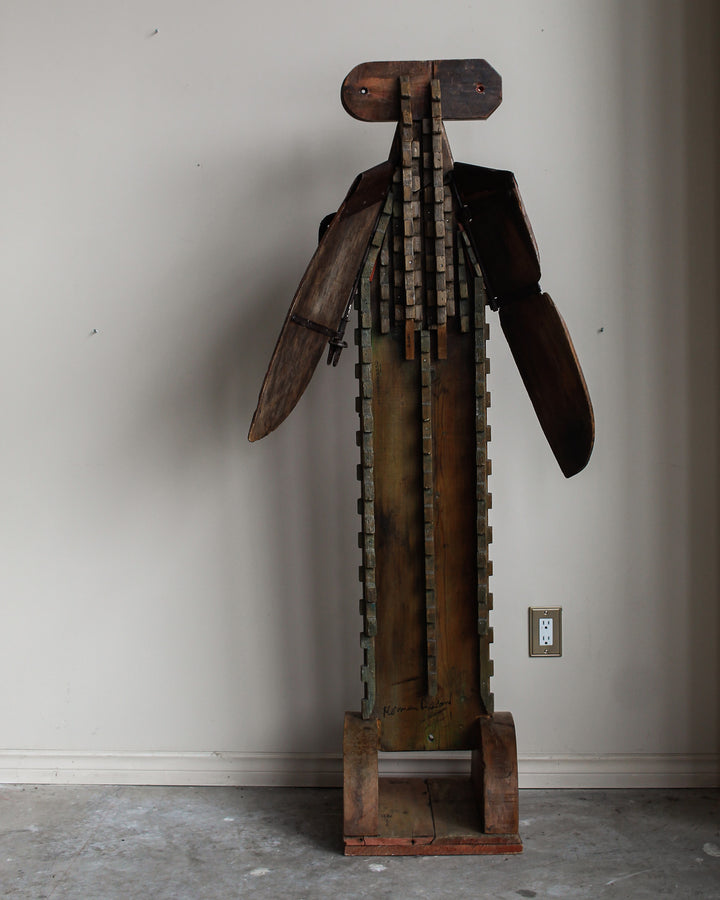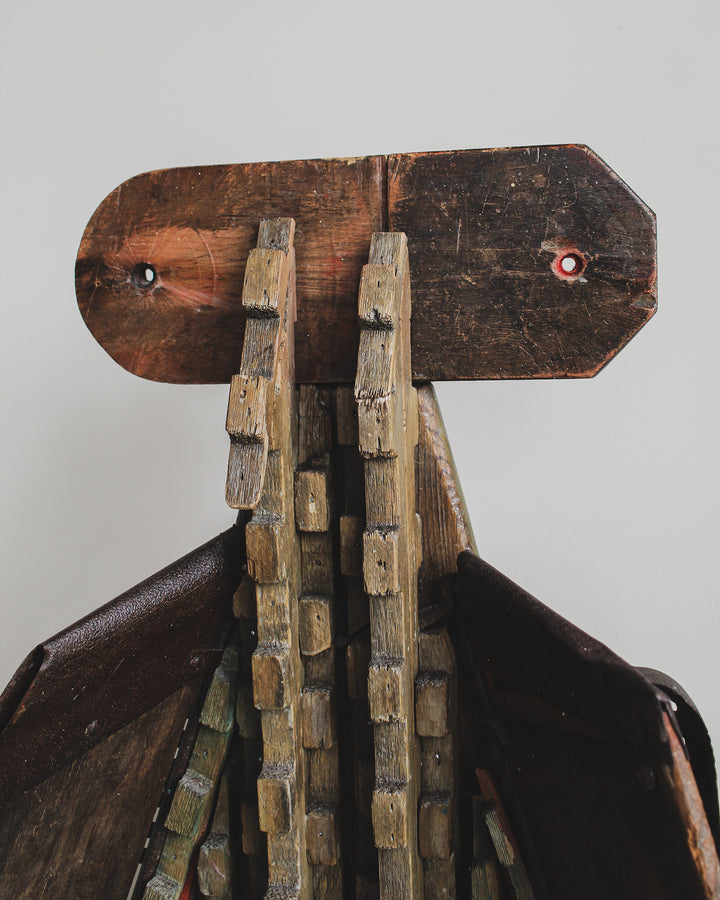Found Objects Brut Sculpture by Herman Ruhland 2010
Herman Ruhland, North Gower, Canada
Found Objects Brut Wooden Sculpture with metal details, on wooden base. Wooden base is removeable to facilitate lifting and moving. Measures 68 inches fuull height (with base) x 29 inches full width (with wings).
Signed and dated on the bottom of the base.
Includes a list of the materials found & used: “1900 Bee Hive Parts (Back), 1930 Molds (Base), 1900 Ironing Plank & 1875 Cutter, 1908 Old Farm Combine Parts (Wings), 1920 Radiator Parts & 1860 Sticks from Old House Walls.
Asking $1,995
International Shipping Available.
Available for viewing & purchase at:
Gallery Elder is a gallery and boutique space in Ottawa, Ontario, Canada specializing in 17th – 19th century antique furniture, homewares and objects ranging from Europe and Asia, to North America – though the goal is to exist as a gallery space and boutique with aims of contemporizing the antique.
We believe that patina, and signs of use and wear on the antique items we present add to the character of the pieces themselves – and in turn, we hope that these items can provide a beautiful textural element to your space, unachievable with items born today.
What is Brut Art:
In keeping with the avant-garde spirit of the 20th century, a key theme of Art Brut is the collective rejection of society’s values. The works are created according to the instincts of these self-taught artists, not conforming to any particular style or preceding movement. This therefore distinguishes them from Naïve artists, who took inspiration from existing movements. The result? Raw, emotional works of art, unique to each individual artist.
Artist Quote:
“To me art is about freedom, free from the restrains of traditional use of materials,
Free of academic dictations how to do art.
Expressing myself from the heart guided by an desire to understand myself.
Let the subconscious do some work
From the heart is the only art.”
Biography:
Herman was born and educated in the Netherlands.
Came to Canada in 1959 always interested in art and design, started a garden design company in 1961 and studied art at the Ottawa school of art for many years.
At present time does painting and sculpturing using different media and found objects.
Lives on a farm near Ottawa.
Past Exhibit Statement:
Herman Ruhland’s works provide the chance to read liberations of form and memories within material. On July 26, LPM Gallery will showcase the recent works of Herman Ruhland, a Dutch-born sculptor and painter who has been a friend to the gallery for many years. Ruhland moved to Canada in 1959, and with a background in horticulture, began designing Japanese inspired gardens. Currently Ruhland lives on a farm outside of Ottawa. His artistic practice has developed on the reworking and assembling of found objects and seemingly disparate materials.
Ruhland’s sculpture works press against the imagined limit of what is figure or what constitutes as figurative. In encountering cultural signifiers, natural forms, bodies and parts together and by non-traditional means, viewers must reach within themselves and sift through their personal memories to create meaning.
Using traditionally undervalued materials by the academy such wood, scrap metal and discarded or forgotten forms, the intention of form, and meanings within models are turned on their head and reversed. Ruhland’s process is not simply a resistance to dominant, fashionable materials of art-marking, rather it is the acting out of a freedom of form. In such a way, the sculptures brush against an archetype of modernist assemblage, but with a deeply personal, contemporaneous sensibility.
Ruhland’s sculptures highlight the phenomenological aspect of reading three-dimensional forms in that we are actually looking at ourselves, and searching through our own embodiment of the viewing experience. In a double bind of variance and grace, hard, sharpened edges, manifest as welcoming surfaces. We feel the working of human hands. The dignity of Ruhalnd’s work rests in a felt intimacy of labor.
As a selection of primarily smaller-scaled, intimate works, this exhibition is a celebration of Herman’s fruitful career, and by extension stands as an ode to his lifelong partners, collaborators, and his wife Margaret.
– Adam Barbu, Gallery Assistant & Writer.

